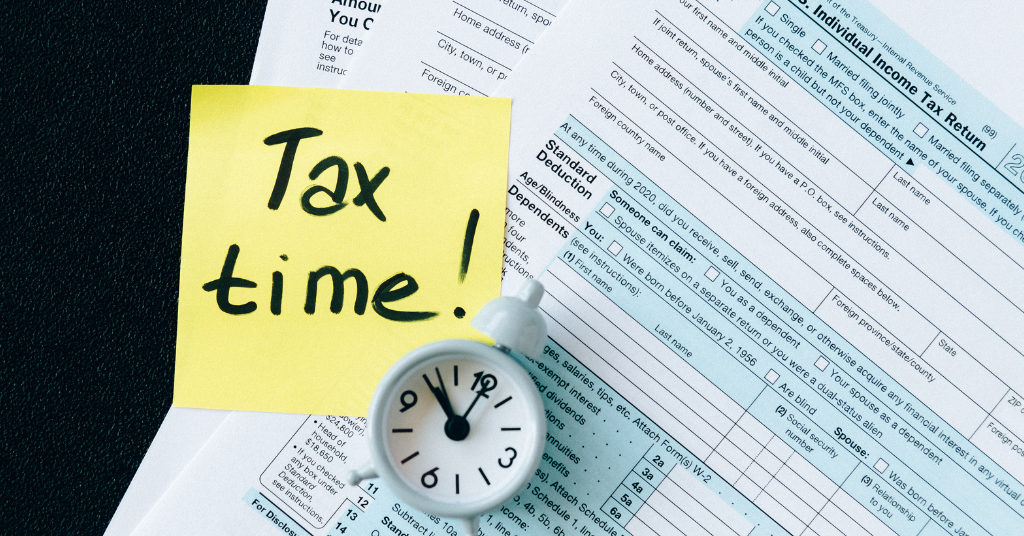

Common Errors When Filing Form 1040, U.S. Individual Tax Return
Category: Individual
It’s tax time again, and we want you to receive all the tax benefits you’re entitled to for 2023. A variety of tax breaks are available for individuals, families, and businesses. Before you file, make sure you’re aware of the following credits and deductions and, if you qualify, you have the documentation you need to take advantage of them.


If you have children or other young relatives in your home, you may be eligible for the Child Tax Credit. To claim this credit, the child must
The full credit is $2,000 and begins to phase out when income reaches $200,000 for single filers and $400,000 for joint returns. For each $1,000 in income over these amounts, the credit is reduced by $50. This credit is nonrefundable, but taxpayers who are eligible for the additional child tax credit can receive up to $1,600 as a refundable credit. If the Senate passes the which it seems poised to do, the refundable portion would increase to $1,800 for tax year 2023. To determine whether you’re eligible, fill out the Child Tax Credit Worksheet for Form 1040.
If you’re providing support for adults in your home, you may be able to claim a credit for other dependents. This credit is available for those who support their adult children, their parents, and other qualifying relatives. To qualify, the dependent must live with you for more than half the year, receive more than half their support from you, and have received less than $4,700 in income in 2023. The maximum credit for other dependents is $500.
If you, your spouse, dependent, or a third party (such as a friend or relative) paid qualified education expenses at an eligible institution of higher education, then you may be eligible to receive education tax credits. Two types of education credits are available for tax year 2023: The American opportunity tax credit (AOTC) and the lifetime learning credit (LLC). The AOTC provides a maximum credit of $2,500, 40% of which refundable, and the LLC maxes out at a $2,000 nonrefundable credit. However, the AOTC has stricter requirements, including at least half-time enrollment and pursuit of a degree or recognized credential. The LLC is available for students taking even a single course, which does not have to be part of a degree program. These credits are available only for those with incomes no greater than $90,000 ($180,000 for joint returns). For more details about these credits, see this IRS comparison chart.
If you bought an electric or fuel cell vehicle in 2023 for personal or business use, you may be eligible for a clean vehicle tax credit. To qualify, you must have purchased the vehicle for your own business or personal use (not for resale) and use it primarily in the US. Additionally, the credit is available only for those with incomes that do not exceed $150,000 ($300,000 for joint returns or $225,000 for those filing as head of household). Due to changes in the tax code, the rules are different depending on when you took possession of the vehicle. If you received a new vehicle prior to April 18, you could claim a base credit of $2,500 plus additional amounts based on battery capacity, up to a maximum of $7,500. For new vehicles delivered on April 18 or later, new critical mineral and battery components requirements must be met to claim the full credit. The purchase of a larger commercial vehicle can qualify you for a more substantial credit, up to a limit of $40,000. Tax credits are also available for some used clean vehicles purchased in 2023, but the income limits for these credits are half those listed for new vehicles. To claim the credit, file Form 8936 with your tax return.
A variety of tax credits are available for those who made home energy efficiency improvements in 2023. These include credits for alternative energy sources like solar and wind, energy-efficient HVAC equipment and water heaters, and upgrades like new windows, insulation, and exterior doors. These credits cover 30% of the cost of eligible home energy efficiency improvements, up to specified limits. This tax credit table from Department of Energy provides details on the credits available for the various types of improvements. Claim your credit by filing Form 5695 with your return.
If you’re self-employed and use a portion of your home exclusively and regularly for business purposes, you may be eligible to claim a home office deduction. The amount is calculated based on the percentage of your home that is dedicated to business use and related expenses. To claim this deduction, file Form 8829 with your return.
If you itemize your deductions, you may be able to deduct costs related to charitable contributions. Donations of cash, other items, and costs related to volunteering (such as transportation costs) are deductible, although you cannot deduct the value of your time spent in volunteer activities. Deductions are limited to 20–60% of the taxpayer’s AGI, depending on the type of contributions made and the organizations receiving them. If your contributions exceed the deduction limits, you may be able to carry them over to future years. Before you file, be sure to get a written letter of acknowledgement from the receiving organization for donations of cash or property valued at more than $250 that includes the amount donated and the estimated value of any goods or services you may have received in exchange for your donation. If you’re deducting $500 or more in noncash donations, you’ll need to fill out Form 8283.
This is far from a complete list of credits and deductions you could be eligible to claim. To avoid leaving money on the table this year, be sure to consult with a qualified tax professional. At Rosenberg Chesnov Advisors LLC, a Stable Rock Company, we’ll work with you to ensure you’re claiming all the tax benefits you’re entitled to this year. For regular updates on our tax and financial tips, subscribe to our blog.


Category: Individual


Category: Accounting


Category: Accounting
Send us a message and we will contact you as soon as possible.
Jeff Coyle, CPA, Partner of Rosenberg Chesnov, has been with the firm since 2015. He joined the firm after 20 years of business and accounting experience where he learned the value of accurate reporting, using financial information as a basis for good business decisions and the importance of accounting for management.
He is a diligent financial professional, able to manage the details and turn them into relevant business leading information. He has a strong financial background in construction, technology, consulting services and risk management. He also knows what it takes to create organizations having built teams, grown companies and designed processes for financial analysis and reporting.
His business experience includes:
Creating and preparing financial reporting, budgeting and forecasting.
Planning and preparation of GAAP and other basis financial statements.
Providing insight on financial results and providing advice based on those results.
Jeff also has a long history of helping individuals manage their taxes and plan their finances including:
Income tax planning and strategy.
Filing quarterly and annual taxes.
Audit support.
General financial and planning advice.
Prior to joining the firm in 2015, Jeff was in the private sector where he held senior financial and management positions including Controller and Chief Financial Officer. He has experience across industries, including construction, technology and professional services which gives him a deep understanding of business.
Jeff graduated from Montclair State University, he is a CPA and member of the American Institute of Certified Public Accountants, New York State Society of Certified Public Accountants and New Jersey State Society of Public Accountants.
Jody H. Chesnov, CPA, Managing Partner of Rosenberg Chesnov, has been with the firm since 2004. After a career of public accounting and general management, Jody knows the value of good financials. Clarity, decision making, and strategy all start with the facts – Jody has been revealing the facts and turning them into good business results for more than three decades.
He takes a pragmatic approach to accounting, finance and business. His work has supported many companies on their path to growth, including helping them find investors, manage scaling and overcome hurdles. His experience and passion for business reach beyond accounting and he helps businesses focus on what the numbers mean organizationally, operationally and financially.
He has a particular expertise in early-stage growth companies. His strengths lie in cutting through the noise to come up with useful, out of the box, solutions that support clients in building their businesses and realizing their larger visions.
Prior to joining the firm in 2004, Jody was in the private sector where he held senior financial and management positions including General Manager, Chief Financial Officer and Controller. He has experience across industries, which gives him a deep understanding of business.
Jody graduated with a BBA in Accounting from Baruch College, he is a CPA and member of the American Institute of Certified Public Accountants and New York State Society of Certified Public Accountants.
In addition to delivering above and beyond accounting results, Jody is a member of the NYSCPA’s Emerging Tech Entrepreneurial Committee (ETEC), Private Equity and Venture Capital Committee and Family Office Committee.
He is an angel investor through the Westchester Angels, and has served as an advisor for many startup companies and as a mentor through the Founders Institute.